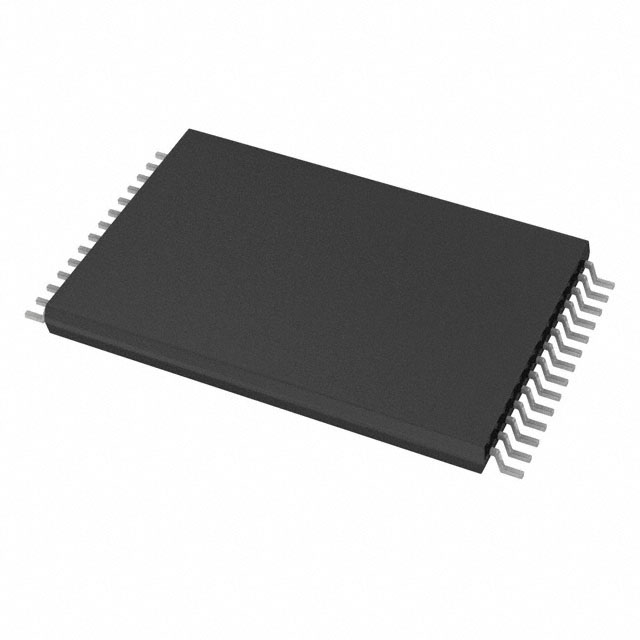Xem thông số kỹ thuật để biết chi tiết sản phẩm.

AT28C256F-15TU
Product Overview
Category
AT28C256F-15TU belongs to the category of non-volatile memory devices.
Use
This product is primarily used for storing and retrieving digital information in electronic systems.
Characteristics
- Non-volatile: The stored data is retained even when power is removed.
- High capacity: The AT28C256F-15TU has a storage capacity of 256 kilobits (32 kilobytes).
- Fast access time: It operates at a maximum access time of 150 nanoseconds.
- Low power consumption: The device is designed to minimize power usage during operation.
- Reliable: It offers high endurance and data retention capabilities.
Package
The AT28C256F-15TU is available in a surface mount package, specifically the Thin Small Outline Package (TSOP).
Essence
The essence of this product lies in its ability to provide non-volatile storage for electronic systems, ensuring data integrity even in the absence of power.
Packaging/Quantity
The AT28C256F-15TU is typically packaged in reels or tubes, with a quantity of 250 units per reel/tube.
Specifications
- Memory Capacity: 256 kilobits (32 kilobytes)
- Access Time: 150 nanoseconds
- Supply Voltage: 2.7V - 5.5V
- Operating Temperature Range: -40°C to +85°C
- Data Retention: 10 years
- Endurance: 100,000 write cycles
Detailed Pin Configuration
The AT28C256F-15TU has a total of 28 pins, which are assigned specific functions. Here is the detailed pin configuration:
- A0-A14: Address Inputs
- CE: Chip Enable Input
- OE: Output Enable Input
- WE: Write Enable Input
- VCC: Power Supply
- GND: Ground
- I/O0-I/O7: Data Input/Output
Functional Features
- Random Access: The AT28C256F-15TU allows for random access to any memory location, enabling efficient data retrieval.
- Byte-Writable: It supports byte-level write operations, providing flexibility in updating specific portions of the memory.
- Hardware and Software Protection: The device offers protection mechanisms to prevent accidental writes or unauthorized access to the stored data.
- High-Speed Operation: With a maximum access time of 150 nanoseconds, it ensures fast data retrieval.
Advantages and Disadvantages
Advantages
- Non-volatile storage ensures data retention even during power loss.
- High capacity allows for storing a significant amount of information.
- Fast access time enables quick retrieval of data.
- Low power consumption minimizes energy usage.
- Reliable endurance and data retention capabilities ensure long-term usability.
Disadvantages
- Limited storage capacity compared to other modern memory devices.
- Relatively slower access time compared to some newer memory technologies.
Working Principles
The AT28C256F-15TU utilizes electrically erasable programmable read-only memory (EEPROM) technology. It stores data by trapping electrical charges within floating gate transistors. These charges represent binary values, which can be read or modified through appropriate control signals.
Detailed Application Field Plans
The AT28C256F-15TU finds applications in various electronic systems that require non-volatile memory for data storage. Some common application fields include: - Embedded systems - Automotive electronics - Industrial control systems - Consumer electronics - Communication devices
Detailed and Complete Alternative Models
- AT28C256-15PU: This is a similar product from the same manufacturer, Atmel, with the same capacity and access time but packaged in a 28-pin DIP package.
- AT28C256E-15PU: Another alternative from Atmel, offering the same capacity and access time but with extended temperature range (-40°C to +125°C) and packaged in a 28-pin DIP package.
These alternative models provide similar functionality and can be used as replacements for the AT28C256F-15TU in various applications.
In conclusion, the AT28C256F-15TU is a non-volatile memory device that offers high capacity, fast access time, and low power consumption. It finds applications in diverse electronic systems and provides reliable data storage capabilities.
Liệt kê 10 câu hỏi và câu trả lời thường gặp liên quan đến ứng dụng AT28C256F-15TU trong giải pháp kỹ thuật
Sure! Here are 10 common questions and answers related to the application of AT28C256F-15TU in technical solutions:
Q: What is the AT28C256F-15TU? A: The AT28C256F-15TU is a 32K x 8 low-power CMOS EEPROM (Electrically Erasable Programmable Read-Only Memory) chip.
Q: What is the operating voltage range for the AT28C256F-15TU? A: The AT28C256F-15TU operates within a voltage range of 2.7V to 5.5V.
Q: What is the maximum clock frequency supported by the AT28C256F-15TU? A: The AT28C256F-15TU supports a maximum clock frequency of 150 kHz.
Q: How much data can be stored in the AT28C256F-15TU? A: The AT28C256F-15TU has a storage capacity of 256 kilobits or 32 kilobytes.
Q: Can the AT28C256F-15TU be reprogrammed multiple times? A: Yes, the AT28C256F-15TU is electrically erasable and programmable, allowing it to be reprogrammed multiple times.
Q: What is the typical endurance of the AT28C256F-15TU? A: The AT28C256F-15TU has a typical endurance of 100,000 erase/write cycles.
Q: Does the AT28C256F-15TU require an external power supply? A: Yes, the AT28C256F-15TU requires an external power supply within the specified voltage range.
Q: Can the AT28C256F-15TU operate in harsh environments? A: The AT28C256F-15TU is designed to operate within a temperature range of -40°C to +85°C, making it suitable for various environments.
Q: What interface does the AT28C256F-15TU use for communication? A: The AT28C256F-15TU uses a standard 8-bit parallel interface for communication with other devices.
Q: Are there any special considerations for programming the AT28C256F-15TU? A: Yes, it is important to follow the manufacturer's guidelines and timing specifications when programming the AT28C256F-15TU to ensure proper operation.
Please note that these answers are general and may vary depending on specific application requirements and datasheet information.

